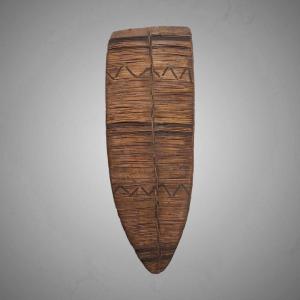In the foreground, on the left, two leaders of men on horseback are talking lively, we can see in the distance behind them a town with prominent bell towers typical of the representations of the Flemish School of this period.
On the right, we can also distinguish several successive shots: what seems to be a dead tree in the foreground, then a dog, then a man who seems to have been emptied of game, followed by another who is skinning an animal on the ground near a tent on the right and finally in the background the crowd of soldiers gathered. In the very last shot we can make out a large rocky massif that is lost in the sky and the clouds.
This painting offers a fascinating and detailed composition, depicting hunters, their horses and a dense and lively landscape.
These numerous characters in full activity around a camp in the middle of nature bring dynamism and depth to the whole. Indeed, the succession of shots is remarkable with elements that follow one another and give real depth to this medium-sized painting.
The precise outline of the brushstrokes, almost sketched, and the intensity of the chiaroscuro effects testify to a rigorous graphic preparation and a refined and elaborate pictorial approach.
In this canvas, a remarkable ability to assimilate the heritage of the Flemish tradition is immediately evident, perceptible through the chromatic palette deployed and a clear predilection for drawing.
This highlights both the richness of the details and the methodical and rational organization of each figure or object represented. The painting was carefully framed by the DELF house, renowned for its know-how.

















































 Le Magazine de PROANTIC
Le Magazine de PROANTIC TRÉSORS Magazine
TRÉSORS Magazine Rivista Artiquariato
Rivista Artiquariato